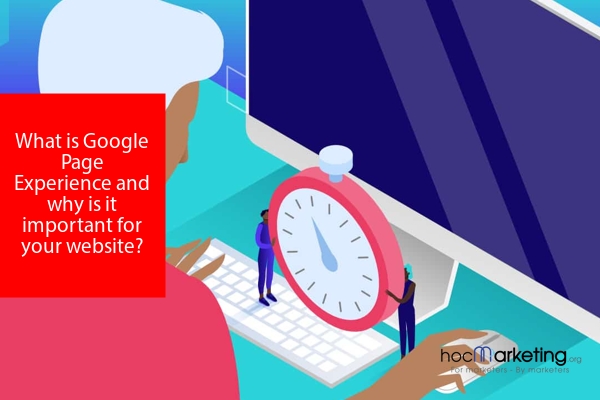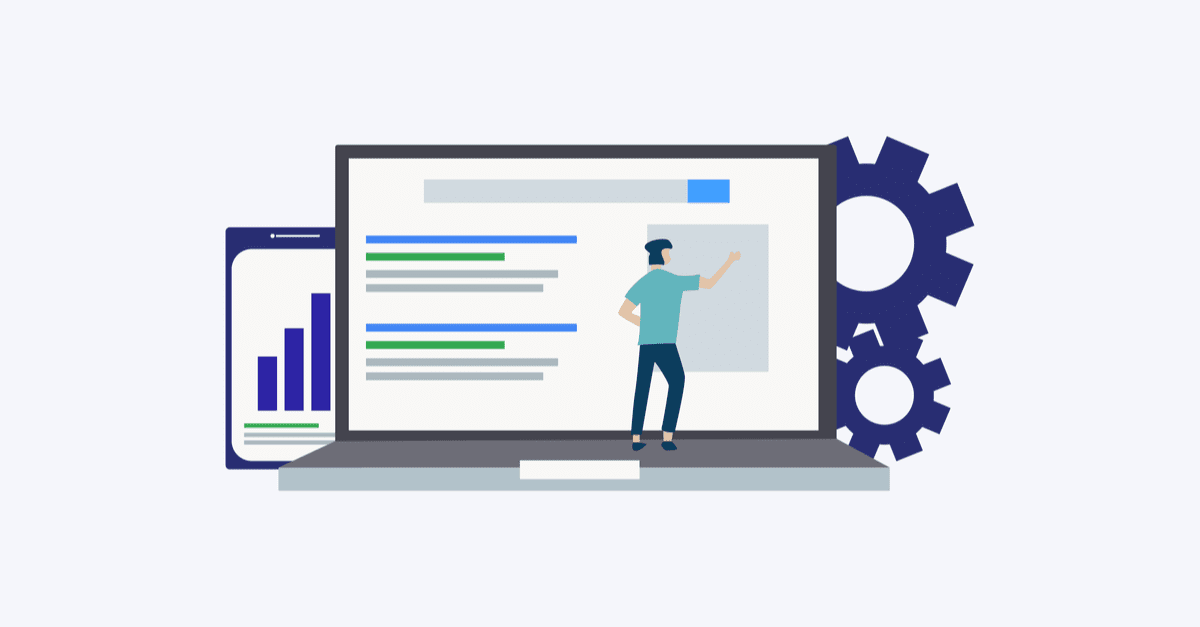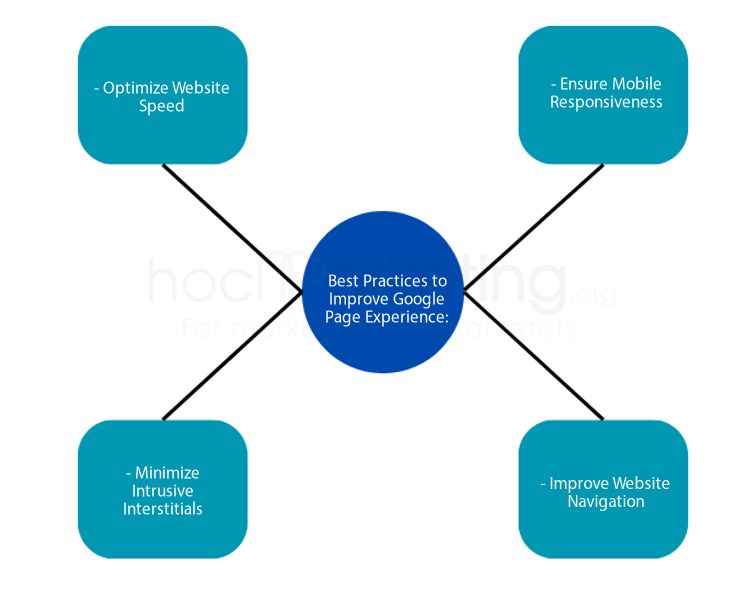
What is Google Page Experience and why is it important for your website?

Learn about the importance of Google Page Experience for your website's user experience and SEO ranking. Discover the key metrics of Core Web Vitals and how to improve them through website speed optimization, mobile responsiveness, navigation, and minimizing intrusive interstitials. Stay ahead of the game with the future of Google Page Experience.
As website owners and digital marketers, we are always looking for ways to improve our online presence and optimize our website for search engines. Google has recently announced an important update that will affect how websites are ranked - Google Page Experience. In this blog post, we will dive into what Google Page Experience is, why it is important for your website, and the key metrics that determine it. We will also provide you with best practices to improve your website's Page Experience and a look into the future of this important ranking factor. Let's get started!
1. What is Google Page Experience?
Google Page Experience is a set of metrics that measure how well users perceive a website's performance and interactivity. It takes into account various factors that contribute to the overall user experience, such as page loading speed, mobile responsiveness, and visual stability. Google introduced Page Experience as a ranking factor in 2021, which means that websites that provide a better user experience are more likely to rank higher in search results. In the following sections, we will explore why Google Page Experience is important for your website, the key metrics that define it, and some best practices to improve it.
2. Importance of Google Page Experience for Your Website
Google Page Experience is an essential factor that website owners need to consider to provide a seamless experience to their users. The importance of Google Page Experience lies in two main aspects: user experience and SEO ranking. When users visit a website, they expect it to load quickly, be mobile-friendly, and easy to navigate. If a website fails to meet these expectations, users tend to leave, resulting in a high bounce rate. Hence, a good page experience is crucial to retain users and keep them engaged.
Apart from providing a good user experience, Google Page Experience also affects the website's SEO ranking. Google has been making constant efforts to provide the best organic search results to its users. In line with this, Google has updated its search algorithm to include Google Page Experience as a ranking factor. This means that websites that offer a better page experience are likely to rank higher in Google search results, leading to more traffic and potential customers.
To measure the page experience of a website, Google has introduced Core Web Vitals, which are a set of key metrics that measure the loading speed, interactivity, and visual stability of a website. These metrics include Largest Contentful Paint (LCP), First Input Delay (FID), and Cumulative Layout Shift (CLS). Websites that perform well in these metrics are likely to provide a better user experience, leading to a higher SEO ranking.
To improve Google Page Experience, website owners need to follow best practices such as optimizing website speed, ensuring mobile responsiveness, improving website navigation, and minimizing intrusive interstitials. By adopting these best practices, website owners can ensure that their website provides a better page experience, leading to higher user engagement and an improved SEO ranking.
In essence, Google Page Experience is a critical factor that website owners need to consider to provide a seamless experience to their users and improve their website's search engine ranking. By focusing on providing a better page experience, website owners can retain users, increase engagement, and drive more traffic to their website.
User Experience
Having a positive user experience is critical for any website, and Google Page Experience takes this into account when ranking websites. User experience encompasses all aspects of a user's interaction with a website, including page load time, ease of navigation, and accessibility. A website that provides a positive user experience is more likely to keep visitors engaged, increase the likelihood of conversions, and ultimately drive more traffic to the website. In the next section, we will explore how Google Page Experience impacts SEO ranking and why it is important to prioritize user experience when designing and optimizing your website.
SEO Ranking
Google Page Experience is not only crucial for the user experience of your website visitors, but it also has a significant impact on your website's SEO ranking. Google has always placed great emphasis on providing the best possible user experience with their search engine, and the Page Experience update is just another step in that direction. With this update, Google aims to reward websites that provide a better user experience and penalize those that don't. Therefore, having a good Page Experience score can help boost your website's ranking on Google search results, while a poor score can cause it to fall behind. In short, the better your website's Page Experience, the more likely it is to rank higher on Google's search results page, resulting in more traffic and potentially more conversions.
3. Core Web Vitals: The Key Metrics of Google Page Experience
To measure the user experience on a website, Google has introduced Core Web Vitals, which are essentially key metrics that website owners need to focus on in order to improve their website's page experience. The three main Core Web Vitals are Largest Contentful Paint (LCP), First Input Delay (FID), and Cumulative Layout Shift (CLS). LCP measures how long it takes for the largest element on the page to load, FID measures the time it takes for a user to interact with the page, and CLS measures the unexpected layout shifts that users might experience while browsing a website. These metrics have been introduced to help website owners optimize their website's loading speed, responsiveness, and visual stability. By improving these metrics, website owners can improve their website's overall page experience, which can in turn lead to better SEO rankings and higher user engagement.
Largest Contentful Paint (LCP)
Largest Contentful Paint (LCP) is one of the three Core Web Vitals that Google considers important for a website's page experience. It measures the loading speed of the largest content element on a webpage, such as an image or video. A good LCP score is achieved when the largest element on a page loads within 2.5 seconds or less. Anything longer than that may negatively impact a website's ranking on search engine results pages. The reason why LCP is important is that it directly affects the user experience. Slow loading times can frustrate users and lead them to abandon a website, resulting in a high bounce rate. Therefore, website owners need to ensure that their website's content is optimized for fast loading times, especially the largest element on the page.
First Input Delay (FID)
First Input Delay (FID) is one of the three Core Web Vitals that Google uses to measure the user experience on a website. FID measures the time between when a user interacts with a website and when the website responds to that interaction. This interaction can be anything from clicking a button to filling out a form. A long FID can negatively impact the user experience, as it can make the website feel unresponsive and slow. FID is measured in milliseconds and should ideally be less than 100ms. Improving FID can lead to a better user experience, increased engagement, and improved SEO ranking. In the next sub-section, we will explore ways to improve FID on your website.
Cumulative Layout Shift (CLS)
Cumulative Layout Shift (CLS) is another core web vital metric that measures the visual stability of a website. It quantifies how frequently layout shifts occur on a webpage, and how much these shifts affect the user experience. A layout shift happens when an element on a page changes its position unexpectedly, often leading to users clicking the wrong button or link. CLS is calculated by multiplying the impact fraction by the distance fraction. The impact fraction is the proportion of the viewport that is affected by the shift, while the distance fraction is the distance the element moves relative to the viewport.
A low CLS score indicates that a website is stable and visually appealing to users. On the other hand, a high CLS score means that users might experience frustration and confusion while browsing a website. Two common causes of layout shifts are images without dimensions and ads, pop-ups, or banners that load after the main content. To improve CLS, website owners should ensure that all images and videos have specified dimensions, and that all elements have a reserved space on the page. Additionally, they should avoid using intrusive interstitials or large banners and pop-ups that shift the layout of a webpage. By optimizing CLS, website owners can provide a better user experience and improve their SEO ranking.
4. Best Practices to Improve Google Page Experience
To improve your website's Google Page Experience, there are several best practices you can implement. First, optimizing your website speed is crucial. Slow loading times can result in a poor user experience and negatively impact your SEO ranking. You can improve website speed by minimizing code, compressing images, and leveraging browser caching.
Secondly, ensure that your website is mobile-responsive. With more and more users accessing websites on their mobile devices, it's important that your website is optimized for different screen sizes. This can be achieved through responsive design or creating a separate mobile version of your website.
Improving website navigation is also important for a good user experience. Make sure your website is easy to navigate, with clear menus and logical page structures. This will help users find the information they're looking for quickly and easily.
Lastly, minimize intrusive interstitials on your website. Pop-ups or full-screen ads that interrupt a user's browsing experience can be frustrating and result in a higher bounce rate. Instead, use non-intrusive ways to promote your content or products, such as in-text links or banners.
Implementing these best practices can not only improve your website's Google Page Experience, but also lead to a better user experience and higher SEO ranking.
Optimize Website Speed
To improve your Google Page Experience, one of the essential steps is to optimize your website speed. Slow-loading websites can be frustrating for users, leading to a negative experience and increased bounce rates. Moreover, website speed is one of the crucial factors that Google considers while ranking websites. Slow websites may not only impact user experience but also affect your website's visibility in search results.
To optimize your website speed, you can start by compressing your images and videos. Large-sized images and videos can significantly slow down your website, affecting its load time. You can use compression tools to reduce the size of your images and videos without compromising their quality. Another effective way to improve website speed is to leverage browser caching. Browser caching allows your website to store frequently used resources, such as images and videos, in a user's browser cache, enabling faster load times for repeat visitors.
Furthermore, you can also optimize your website code to improve website speed. Minifying your CSS and JavaScript files can reduce their size, leading to faster load times. Additionally, reducing the number of HTTP requests on your website can also improve website speed. This can be achieved by combining multiple files, such as CSS and JavaScript files, into one, reducing the number of requests made to the server.
Overall, optimizing your website speed is crucial to improve your Google Page Experience. By following the best practices mentioned above, you can reduce your website's load time, provide a better user experience, and improve your website's SEO ranking.
Ensure Mobile Responsiveness
With the widespread use of smartphones and tablets, it has become essential for websites to be mobile-friendly. Mobile responsiveness refers to how well a website adapts to different screen sizes and device types. A website that is not mobile-responsive can result in a poor user experience, which can lead to high bounce rates and low engagement.
To ensure mobile responsiveness, it is important to use a responsive design that can adjust to different screen sizes. This means that the website's layout, fonts, and images should be optimized to work on all devices. Additionally, the website should have a mobile-friendly navigation menu that is easy to use on a touch screen device.
Another important aspect of mobile responsiveness is website speed. With mobile users being more impatient than desktop users, a slow-loading website can result in frustrated users and high bounce rates. Therefore, it is important to optimize website speed for mobile devices by compressing images, reducing HTTP requests, and minifying code.
In summary, mobile responsiveness is a crucial aspect of Google Page Experience. A website that is not mobile-friendly can result in poor user experience and low engagement. To ensure mobile responsiveness, it is important to use a responsive design, have a mobile-friendly navigation menu, and optimize website speed for mobile devices.
Improve Website Navigation
A website's navigation plays a crucial role in providing a good user experience and enhancing the Google Page Experience. Easy navigation helps visitors to browse through the website, find the information they need and engages them longer on the site. A well-organized and structured website navigation can also help search engines understand the content and relevance of the website pages, leading to a higher ranking on the search engine results page (SERP).
Improving website navigation can be done by optimizing the menu structure and ensuring that it is easily accessible from every page. The menu should be simple, clear, and intuitive, and the labels should be descriptive and self-explanatory. A search bar can also be added to the website to help visitors find what they are looking for more quickly and easily.
Another way to improve website navigation is by creating internal links. Internal links help visitors to navigate between pages of the website, and they also help search engines to crawl and understand the website content. When creating internal links, it is essential to use descriptive anchor text that accurately reflects the content of the linked page.
Finally, website navigation can be improved by optimizing the website's information architecture. This involves organizing the content into categories and subcategories, creating a hierarchy that makes it easy for visitors to find the information they need. A clear and well-structured information architecture can also help search engines to understand the content and relevance of the website pages, leading to a higher ranking on the SERP.
Improving website navigation is a crucial step in enhancing the Google Page Experience and providing a good user experience. By optimizing the menu structure, creating internal links, and optimizing the information architecture, website owners can improve their website's usability, engagement, and ranking on the search engine results page.
Minimize Intrusive Interstitials The Future of Google Page Experience
As Google prioritizes user experience, minimizing intrusive interstitials has become a crucial factor in determining website ranking. Interstitials are pop-ups, ads, or banners that appear on a website, interrupting the user's experience. While interstitials may be necessary for certain websites, their overuse can result in a poor user experience. Therefore, Google has introduced guidelines for interstitials, which include avoiding the use of pop-ups that cover the main content, using interstitials that are easy to dismiss, and ensuring that the content is easily accessible. By reducing the number of intrusive interstitials on your website, you can improve the user experience and boost your website's ranking on Google.
Summary
In conclusion, Google Page Experience is an important factor for website owners to consider if they want to rank well in search results and provide a positive user experience. By focusing on factors such as loading speed, mobile-friendliness, and interactivity, website owners can improve their site's overall performance and attract more visitors. It's important to stay up-to-date with Google's algorithm updates and continue to prioritize user experience in order to stay competitive in the online landscape. By doing so, you can ensure that your website is not only visible, but also enjoyable for your visitors to use.















